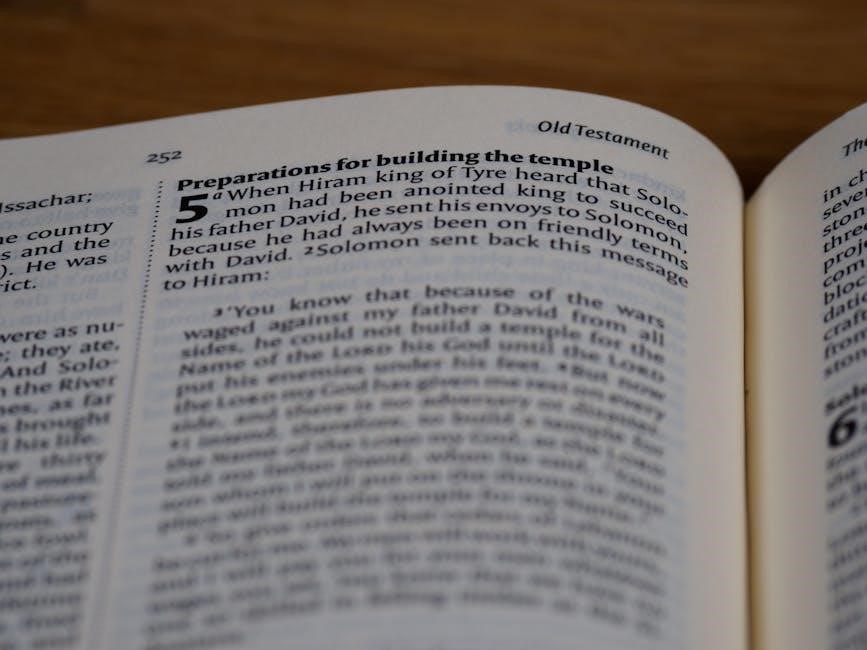i have a dream commonlit answer key pdf
The “I Have a Dream” speech, delivered by Martin Luther King Jr․ during the Civil Rights Movement, is a landmark moment in American history, advocating for racial equality and justice․ The CommonLit answer key PDF provides a comprehensive guide, enhancing understanding of its themes and rhetoric, making it a vital tool for educational purposes․
Overview of Martin Luther King Jr․ and the Civil Rights Movement
Martin Luther King Jr․ was a pivotal leader in the American Civil Rights Movement, advocating for racial equality and social justice through nonviolent resistance․ Born in 1929, King became a prominent figure in the struggle against racial segregation and discrimination, inspiring millions with his powerful oratory skills and unwavering commitment to justice․ The Civil Rights Movement, which gained momentum in the 1950s and 1960s, sought to dismantle systemic racism and secure legal and social equality for African Americans․ King’s leadership played a crucial role in landmark events such as the Montgomery Bus Boycott, the March on Washington, and the passage of the Civil Rights Act of 1964․ His iconic “I Have a Dream” speech, delivered during the March on Washington in 1963, remains a defining moment in the fight for equality, envisioning a future where people of all races could coexist in harmony․ The CommonLit answer key PDF provides valuable insights into this speech, helping students and educators analyze its themes, historical context, and enduring impact․
The Historical Context of the “I Have a Dream” Speech
The “I Have a Dream” speech was delivered by Martin Luther King Jr․ on August 28, 1963, during the March on Washington for Jobs and Freedom․ This event marked a pivotal moment in the Civil Rights Movement, as hundreds of thousands of people gathered to advocate for racial equality and social justice․ The speech occurred 100 years after President Abraham Lincoln’s Emancipation Proclamation, highlighting the ongoing struggle for true freedom and equality for African Americans․ King’s address criticized the persistent racial discrimination and inequality faced by Black Americans, despite the legal abolition of slavery․ He called for an end to segregation and demanded equal opportunities for all, envisioning a future where people of all races could coexist in harmony․ The speech’s powerful message resonated nationally, galvanizing support for the passage of the Civil Rights Act of 1964․ The CommonLit answer key PDF provides insights into this historical context, helping students understand the speech’s significance in the broader struggle for justice and equality․

The Structure and Key Elements of the Speech
Martin Luther King Jr․’s “I Have a Dream” speech is masterfully structured to convey a powerful message of hope and justice․ It begins with a historical context, referencing the Emancipation Proclamation, and transitions into a critique of ongoing racial inequality․ The speech is divided into three main sections: an introduction, a central argument, and a conclusion․ King uses repetition, such as the iconic phrase “I have a dream,” to emphasize his vision of a unified America․ He employs metaphors, like comparing the Constitution to a “promissory note,” to illustrate the unfulfilled promises of equality․ The speech also incorporates allusions to biblical scripture and historical documents, adding depth and moral authority․ The CommonLit answer key PDF highlights these rhetorical devices, providing insights into how King’s structure and language contribute to the speech’s emotional and persuasive impact․ This analysis helps students and educators appreciate the speech’s craftsmanship and its enduring relevance in the fight for justice․
Themes and Rhetorical Devices in the Speech

Martin Luther King Jr․’s “I Have a Dream” speech is rich in themes of hope, equality, and justice, which are central to its enduring impact․ King emphasizes the importance of unity and the need to overcome racial barriers, envisioning a future where individuals are judged by their character rather than the color of their skin․ The speech is renowned for its masterful use of rhetorical devices, including metaphors, allusions, and repetition․ For instance, King’s repetition of the phrase “I have a dream” creates a sense of urgency and reinforces his vision of a harmonious society․ He also employs biblical allusions, such as references to the “mountain top,” to evoke moral authority and inspire his audience․ The CommonLit answer key PDF provides detailed analysis of these themes and devices, helping students and educators understand how King’s language and structure contribute to the speech’s persuasive power․ This resource is invaluable for deeper comprehension of the speech’s literary and historical significance․
The Importance of the “I Have a Dream” Speech in American History
Martin Luther King Jr․’s “I Have a Dream” speech is a cornerstone of American history, delivered during the 1963 March on Washington for Jobs and Freedom․ It played a pivotal role in the Civil Rights Movement, advocating for racial equality and inspiring nationwide action․ The speech’s powerful message of hope and justice resonated deeply, contributing to the passage of landmark legislation such as the Civil Rights Act of 1964 and the Voting Rights Act of 1965․ Its emphasis on nonviolent resistance and the pursuit of a unified society continues to influence social justice movements today․ The CommonLit answer key PDF offers insights into the speech’s historical context and its enduring relevance, making it an essential resource for understanding its significance․ By studying this speech, educators and students can explore its profound impact on American society and its ongoing role in the fight for equality and justice․ The speech remains a timeless call to action, inspiring future generations to strive for a more equitable world․
Understanding the CommonLit Answer Key PDF

The CommonLit Answer Key PDF is a comprehensive guide for analyzing Martin Luther King Jr․’s “I Have a Dream” speech, offering detailed answers, explanations, and insights․ It serves as an essential study aid for both educators and students, providing a deeper understanding of the speech’s themes, historical context, and rhetorical devices․ This resource is designed to support effective teaching and learning, ensuring a thorough grasp of the material; By utilizing the answer key, users can enhance their engagement with the speech and its significance in American history․ It is a valuable tool for anyone seeking to explore the profound messages and lasting impact of King’s iconic address․
What is the CommonLit Platform?
CommonLit is a free, award-winning online platform designed to support teachers and students in the classroom․ It offers a vast library of high-quality educational resources, including texts, guided reading questions, and interactive tools․ The platform is tailored to meet the needs of diverse learners, providing leveled texts and differentiated instruction options․ CommonLit aims to foster critical thinking, reading comprehension, and analytical skills through its curated content․ It is widely used in schools to enhance literacy and deepen students’ understanding of complex texts․ The platform also includes features such as progress tracking, discussion forums, and customizable assignments, making it a versatile tool for educators․ By integrating texts like Martin Luther King Jr․’s “I Have a Dream” speech, CommonLit helps students engage with historically significant works while developing essential skills․ Its accessibility and comprehensive resources make it a valuable asset for education․
Features of the “I Have a Dream” Answer Key PDF
The “I Have a Dream” answer key PDF is a detailed resource designed to support both educators and students․ It includes correct answers to multiple-choice questions, sample responses for short-answer prompts, and explanations for each answer choice․ This PDF also provides comprehension questions and analysis to deepen understanding of the speech․ Additionally, it offers essay prompts with grading criteria, helping students structure their essays effectively․ The answer key aligns with the CommonLit platform, ensuring consistency and accuracy․ It serves as a valuable study guide, enabling students to review and prepare for assessments confidently․ Educators can use the PDF to evaluate student responses and ensure accurate grading․ Overall, the “I Have a Dream” answer key PDF is an essential tool for anyone seeking to master the content and themes of Martin Luther King Jr․’s iconic speech․
How to Use the Answer Key for Effective Study
To use the “I Have a Dream” answer key PDF effectively, start by reviewing the multiple-choice questions and comparing your answers with the provided solutions․ This helps identify areas for improvement․ Next, examine the sample responses for short-answer questions to understand how to structure your answers clearly and thoroughly․ Pay attention to the explanations for each answer, as they offer insights into the speech’s themes, historical context, and rhetorical devices․ For essay prompts, use the grading criteria to ensure your essays address all required points and demonstrate a deep understanding of the material․ Additionally, utilize the comprehension questions to test your knowledge and analyze the speech’s significance․ Teachers can use the PDF to create study guides or review materials, while students can employ it as a self-study tool to prepare for assessments․ By leveraging these features, the answer key becomes a powerful resource for mastering the content and excelling in related assignments․
Benefits of Using the Answer Key for Educators
Educators can greatly benefit from the “I Have a Dream” answer key PDF by streamlining their grading process and ensuring consistency in assessment․ The PDF provides correct answers to multiple-choice questions, sample responses for short-answer items, and detailed explanations for each․ This allows teachers to accurately evaluate student performance and provide constructive feedback․ Additionally, the answer key serves as a valuable resource for lesson planning, enabling educators to design assignments and discussions that align with the speech’s key themes and rhetorical devices․ The PDF also offers insights into the historical context and significance of the speech, helping educators enhance their own understanding and deliver more informed instruction․ By using the answer key, teachers can save time, improve the quality of their teaching materials, and support students in achieving a deeper understanding of Martin Luther King Jr․’s iconic address․ This resource is particularly useful for educators seeking to integrate the speech into their curriculum effectively․

Benefits of Using the Answer Key for Students
Students can significantly benefit from the “I Have a Dream” answer key PDF by gaining clarity on complex concepts and improving their understanding of the speech․ The PDF provides correct answers to multiple-choice and short-answer questions, along with detailed explanations, enabling students to assess their own performance and identify areas for improvement․ By reviewing sample responses, students can learn how to structure their answers effectively and develop a deeper understanding of the speech’s themes, such as equality and justice․ The answer key also offers insights into the historical context and rhetorical devices used by Martin Luther King Jr․, helping students analyze the speech more critically․ Additionally, the PDF serves as a study guide, allowing students to prepare thoroughly for assignments and exams․ With the answer key, students can reduce stress, achieve better grades, and gain a more profound appreciation for the significance of the “I Have a Dream” speech in American history․

Breaking Down the Answer Key
The CommonLit answer key PDF includes multiple-choice questions, short-answer prompts, and essay topics, each with sample responses and grading criteria․ It also features comprehension questions and analysis, helping students and educators understand the speech’s themes and rhetoric effectively․
Multiple-Choice Questions and Answers
The CommonLit answer key PDF includes a section dedicated to multiple-choice questions and answers, designed to test students’ comprehension of Martin Luther King Jr․’s “I Have a Dream” speech․ These questions cover key themes, such as racial equality, justice, and the historical context of the Civil Rights Movement․ Each question is accompanied by the correct answer, ensuring clarity and accuracy for both students and educators․ The multiple-choice format allows learners to assess their understanding of the speech’s main ideas, including its rhetorical devices and emotional appeal․ For example, questions might focus on King’s vision of an integrated society or the significance of the Lincoln Memorial as the speech’s setting․ The answer key also provides brief explanations for each correct answer, helping students grasp the reasoning behind the responses․ This feature is particularly useful for self-study or classroom discussions, enabling deeper engagement with the material․ By using the answer key, educators can efficiently evaluate student progress and provide targeted feedback, while students can identify areas for further review․ The multiple-choice section is a valuable tool for reinforcing learning and ensuring a thorough understanding of the speech’s enduring message․
Short-Answer Questions and Sample Responses
The CommonLit answer key PDF includes a section of short-answer questions and sample responses, designed to deepen students’ understanding of Martin Luther King Jr․’s “I Have a Dream” speech․ These questions prompt learners to analyze specific aspects of the speech, such as its themes, rhetorical devices, and historical context․ Each question is paired with a detailed sample response, providing clear expectations for students and guiding their critical thinking․ For instance, a question might ask about King’s use of metaphor or his vision for racial equality, with the sample response offering a thorough explanation․ Educators can use these responses to assess student work accurately, while students benefit from seeing model answers that enhance their own writing and analysis skills․ The short-answer section is a valuable resource for fostering deeper engagement with the speech and its enduring message of justice and equality․ It ensures that learners can articulate their understanding effectively and develop strong analytical skills․
Essay Prompts and Grading Criteria
The CommonLit answer key PDF provides a range of essay prompts and detailed grading criteria to help students and educators assess written responses to Martin Luther King Jr․’s “I Have a Dream” speech․ These prompts are designed to encourage critical thinking and analysis, such as exploring the speech’s themes of equality and justice or analyzing its rhetorical strategies; The grading criteria outline key elements like thesis development, evidence use, and writing clarity, ensuring consistent evaluation․ For example, a prompt might ask students to discuss how King’s vision of America has evolved since the speech․ The answer key offers sample essays and scoring guidelines, helping educators fairly assess student work․ This section is invaluable for teaching students how to structure arguments and support claims effectively․ By aligning essays with clear criteria, the PDF enhances both teaching and learning experiences, fostering deeper engagement with the speech’s enduring message․
Comprehension Questions and Analysis
The CommonLit answer key PDF includes a variety of comprehension questions designed to test students’ understanding of Martin Luther King Jr․’s “I Have a Dream” speech․ These questions range from basic recall to higher-level analysis, encouraging students to think critically about the speech’s themes, historical context, and rhetorical devices․ For example, questions might ask students to identify key phrases, explain the significance of the Lincoln Memorial setting, or analyze how King uses metaphors to convey his vision of equality․ The answer key provides correct responses, along with explanations, to help students grasp the material fully․ Additionally, the PDF includes analysis sections that break down complex concepts, such as the speech’s structure and the impact of its emotional appeals․ This resource is particularly useful for educators seeking to guide classroom discussions and for students aiming to deepen their understanding of the speech’s enduring relevance․ By focusing on both comprehension and critical thinking, the PDF enhances the learning experience and fosters a deeper connection to King’s message․

Additional Resources and Tools

Beyond the CommonLit answer key PDF, supplementary materials like study guides, video analyses, and interactive lessons enhance understanding of the “I Have a Dream” speech․ These tools, available on platforms like Scribd and Google Drive, provide deeper insights and context․
Where to Find the “I Have a Dream” Answer Key PDF
The “I Have a Dream” answer key PDF is widely available online, with platforms like Scribd, Google Drive, and educational forums offering free downloads․ Additionally, the CommonLit website provides direct access to the resource for registered users․ Many websites, such as static․s123-cdn-static․com, host the PDF for easy access․ Educators and students can also find it through academic databases or by searching specific keywords like “CommonLit I Have a Dream answer key PDF”․ Some platforms require registration or subscription, while others offer it freely․ Ensure to download from reputable sources to avoid unauthorized versions․ This resource is invaluable for studying Martin Luther King Jr․’s speech, offering detailed answers and analysis to enhance understanding and academic performance․
How to Download and Access the PDF
To download and access the “I Have a Dream” answer key PDF, visit reputable platforms like Scribd, Google Drive, or educational websites such as static․s123-cdn-static․com․ Search for keywords like “CommonLit I Have a Dream answer key PDF” to locate the file․ Once found, click the download link to save it to your device․ Some platforms may require registration or subscription for access․ Ensure the source is reliable to avoid unauthorized or incomplete versions․ After downloading, open the PDF using a compatible viewer like Adobe Acrobat or your device’s default PDF reader․ The document provides detailed answers, analysis, and study guides, making it an essential resource for understanding Martin Luther King Jr․’s speech․ By following these steps, educators and students can easily access and utilize the PDF for academic purposes․
Supplementary Materials for Deeper Understanding
For a deeper understanding of the “I Have a Dream” speech, several supplementary materials are available to complement the CommonLit answer key PDF․ These include study guides, vocabulary lists, and historical context resources․ Many websites offer free downloads of these materials, such as static․s123-cdn-static․com and other educational platforms․ Additionally, interactive tools like CommonLit’s platform provide engaging ways to analyze the speech․ Vocabulary lists, such as those defining terms like sweltering and invigorate, help students grasp complex language․ Historical context resources, including timelines and biographies of Martin Luther King Jr․, enrich the learning experience․ These materials are accessible via platforms like Scribd and Google Drive, ensuring easy access for both educators and students․ By utilizing these resources, learners can gain a more comprehensive understanding of the speech’s significance and its role in American history․
The “I Have a Dream” speech remains a cornerstone of American history, inspiring equality and justice․ The CommonLit answer key PDF is an invaluable resource, aiding educators and students in analyzing and understanding this iconic speech’s enduring impact and significance․

The Lasting Impact of the “I Have a Dream” Speech
Martin Luther King Jr․’s “I Have a Dream” speech is a pivotal moment in American history, embodying the struggle for civil rights and equality․ Delivered in 1963, it continues to resonate today, inspiring movements for justice and human rights worldwide․ The speech’s powerful rhetoric and vision of a unified America have made it a cornerstone of democratic ideals․ Its emphasis on equality, justice, and freedom has influenced countless social movements, cementing its legacy as a beacon of hope․ The CommonLit answer key PDF provides a deeper understanding of the speech’s themes, helping students and educators analyze its historical context and enduring relevance․ By studying this speech, individuals gain insights into the power of rhetoric and the importance of standing up for justice․ The “I Have a Dream” speech remains a timeless call to action, reminding society of the ongoing pursuit of equality and the transformative power of words․

The Role of CommonLit in Education
CommonLit is an innovative educational platform designed to enhance teaching and learning experiences․ It provides a wide range of resources, including the “I Have a Dream” answer key PDF, to support educators and students in analyzing complex texts․ By offering interactive tools and detailed study guides, CommonLit helps students engage deeply with historical speeches like Dr․ King’s, fostering a better understanding of their themes, rhetoric, and historical context․ Educators benefit from access to answer keys, sample responses, and grading criteria, which streamline lesson planning and assessment․ The platform also promotes personalized learning, allowing students to explore texts at their own pace․ With its comprehensive resources, CommonLit plays a significant role in making high-quality education accessible and engaging for all․ Its integration of the “I Have a Dream” speech highlights its commitment to teaching critical thinking, equality, and the power of words․
Encouraging Further Study and Analysis
The CommonLit answer key PDF for the “I Have a Dream” speech serves as a valuable resource for encouraging further study and analysis․ By providing detailed answers, explanations, and sample responses, it empowers students to delve deeper into the speech’s themes, rhetorical devices, and historical significance․ Educators can use the PDF to create engaging lesson plans, fostering critical thinking and analytical skills․ The resource also encourages students to explore the broader context of the Civil Rights Movement, connecting Dr․ King’s vision to contemporary issues of equality and justice․ Additionally, the PDF’s comprehensive analysis helps students appreciate the speech’s literary and oratory brilliance, inspiring them to explore other influential texts․ By leveraging the CommonLit answer key, learners can gain a richer understanding of the speech’s enduring impact and its relevance to ongoing struggles for human rights․ This encourages a lifelong commitment to learning and social engagement, ensuring Dr․ King’s message continues to resonate with future generations․


























































































